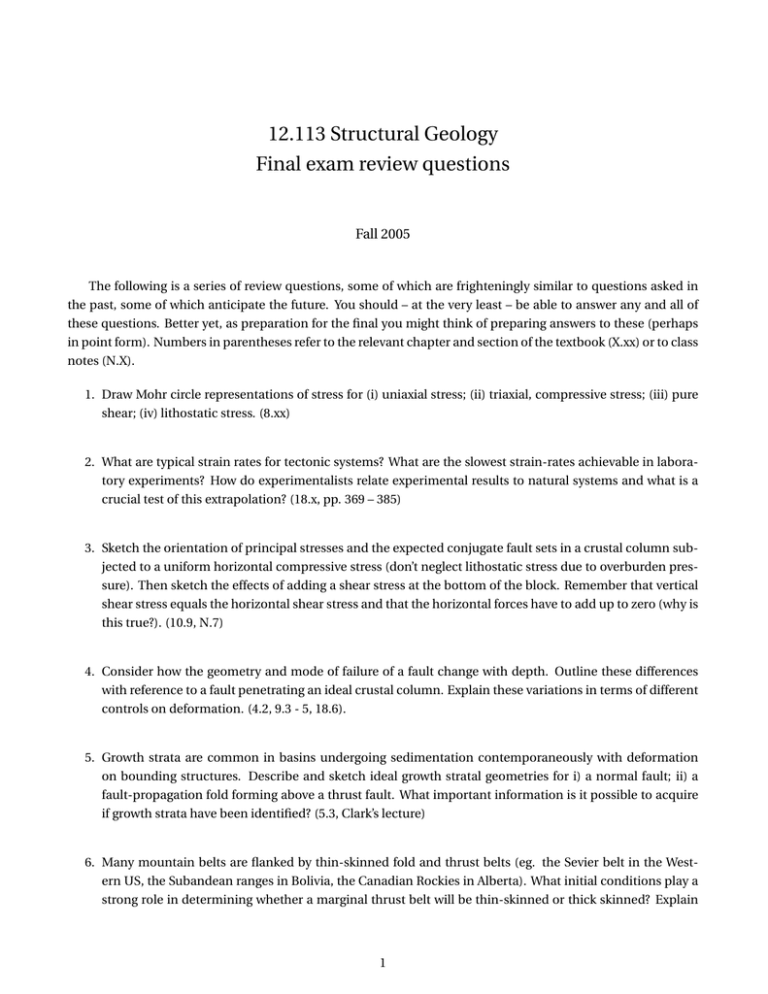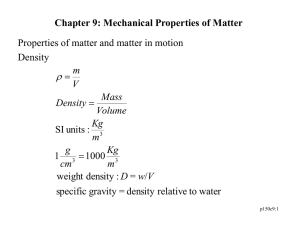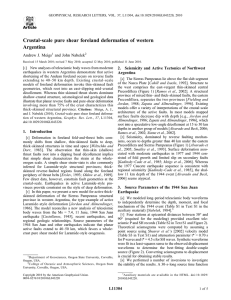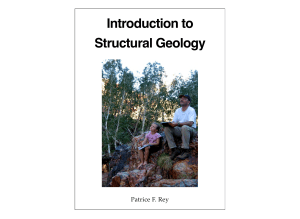12.113 Structural Geology Final exam review questions Fall 2005
advertisement

12.113 Structural Geology Final exam review questions Fall 2005 The following is a series of review questions, some of which are frighteningly similar to questions asked in the past, some of which anticipate the future. You should – at the very least – be able to answer any and all of these questions. Better yet, as preparation for the final you might think of preparing answers to these (perhaps in point form). Numbers in parentheses refer to the relevant chapter and section of the textbook (X.xx) or to class notes (N.X). 1. Draw Mohr circle representations of stress for (i) uniaxial stress; (ii) triaxial, compressive stress; (iii) pure shear; (iv) lithostatic stress. (8.xx) 2. What are typical strain rates for tectonic systems? What are the slowest strain­rates achievable in labora­ tory experiments? How do experimentalists relate experimental results to natural systems and what is a crucial test of this extrapolation? (18.x, pp. 369 – 385) 3. Sketch the orientation of principal stresses and the expected conjugate fault sets in a crustal column sub­ jected to a uniform horizontal compressive stress (don’t neglect lithostatic stress due to overburden pres­ sure). Then sketch the effects of adding a shear stress at the bottom of the block. Remember that vertical shear stress equals the horizontal shear stress and that the horizontal forces have to add up to zero (why is this true?). (10.9, N.7) 4. Consider how the geometry and mode of failure of a fault change with depth. Outline these differences with reference to a fault penetrating an ideal crustal column. Explain these variations in terms of different controls on deformation. (4.2, 9.3 ­ 5, 18.6). 5. Growth strata are common in basins undergoing sedimentation contemporaneously with deformation on bounding structures. Describe and sketch ideal growth stratal geometries for i) a normal fault; ii) a fault­propagation fold forming above a thrust fault. What important information is it possible to acquire if growth strata have been identified? (5.3, Clark’s lecture) 6. Many mountain belts are flanked by thin­skinned fold and thrust belts (eg. the Sevier belt in the West­ ern US, the Subandean ranges in Bolivia, the Canadian Rockies in Alberta). What initial conditions play a strong role in determining whether a marginal thrust belt will be thin­skinned or thick skinned? Explain 1 why cross­section balancing techniques are well­suited to thin­skinned fold and thrust belts with refer­ ence to the assumptions that form the basis of balanced cross­sections. (6.3, 6.4, 6.6, 22.2, labs). 7. Consider a right­lateral strike­slip fault. Draw the geometries of the following features consistent with this setting: en­echelon folds, normal faults, releasing and restraining bends, deflection of passive markers (such as rivers or ridgelines). (7.2, 7.3). 8. Describe three different deformation mechanisms that operate in the plastic deformation of quartz. What deformation mechanism operates in calcite that does not in quartz? (19.3, 19.4, 19.5). 9. Explain, with reference to the extensional and compressional quadrants of the finite and instantaneous strain ellipsoids, how a layer can be folded and then extended in one progressive deformation (explain it for either simple or pure shear). What initial orientation of line does not change its orientation or its length during simple shear? (15.3,15.4,15.5). 10. Explain, with reference to the instantaneous and finite strain ellipses for plane strain, simple shear and the rheology of quartz vs. feldspar, how C/S fabrics develop in an initially isotropic granite, and how these are a reliable shear sense indicator. (X.xx; Microtectonics, sec.) 11. a) Draw one layer of a concentric fold. Add a series of strain ellipses along the top and bottom of the bed, indicating where zero strain, extensional strain and compressional strain are found and draw in some of the structures that might accompany the extensional and compressional domains. b) Draw a concentric fold of several layers. Indicate the sense of slip between each bed. Draw what happens with depth, includ­ ing detachment and flow of material. What about the geometry of a concentric fold makes interbed slip, detachment and material flow necessary? (11.5, 12.1, 12.5) 12. Discuss the importance of viscosity contrast on the buckling of multiple layers. Why is a single competent layer in a weaker substrate likely to fold ptygmatically? What else besides viscosity contrast will affect the style of folding in multi­layered sequences? (12.5, 20.2) 13. Give a specific example of each of a convergent, a divergent and a transform tectonic setting. Describe the type of structures you might find in each setting, and draw cross sections for the entire crustal column. (21) 14. Give two examples of strong field evidence for multiple generations of deformation. 2






